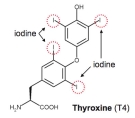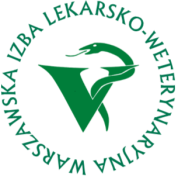Because of the vague clinical signs and the absence of specific abnormalities on a routine blood test, the diagnosis should be confirmed through a specific evaluation of the thyroid gland. As always, laboratory results should be interpreted in the light of history and physical examination findings. A thorough clinical examination of the patient, knowledge of the advantages and disadvantages of all available tests and knowledge of the factors that can influence the results, will allow the veterinarian to correctly diagnose the disease.
In dogs with suspected hypothyroidism, the clinical suspicion of the disease is obtained by reviewing the dog’s signalment, history, and clinical features. A general blood screening examination, including a CBC, comprehensive chemical panel, and complete urinalysis are next done to look for changes consistent with hypothyroidism and exclude other problems that mimic hypothyroidism.
If hypothyroidism is still suspected, the diagnosis should be confirmed through a specific evaluation of the thyroid gland function. These tests include measurement of serum concentrations of total and free T4, T3, and TSH. The choice of diagnostic test(s) performed are based heavily on the index of suspicion for hypothyroidism.
In some dogs, it may also be necessary to use thyroid scintigraphy to definitely confirm the condition. However, most veterinary offices do not have the equipment needed to do this thyroid scanning procedure.
Thyroid specific evaluation
Total thyroxine (T4)
This test usually used as the initial thyroid specific screening test. If the results of this test are within normal limits, your veterinarian will usually look for other causes of your dog’s clinical signs. Most dogs with hypothyroidism will have low values for T4 compared with healthy dogs. However, dogs that have other diseases can also have low T4, so false-positive T4 results are commonly observed. Again, that is why general laboratory testing must be done in all dogs with suspected hypothyroidism.
 This test measures the total amount of thyroxine (abbreviated T4, because it contains 4 iodine molecules) which is the main hormone produced by the thyroid gland. hormone circulating in the blood, which includes both bound and unbound T4 molecules. More than 99% of T4 hormone is “bound,” meaning that it is attached to proteins in the blood, making the bound T4 too big to pass from the circulation into the tissues. A T4 result by itself is can be misleading, inasmuch as it is affected by anything that changes the amount of binding proteins circulating in the blood, such as occurs with drugs and nonthyroidal illness.
This test measures the total amount of thyroxine (abbreviated T4, because it contains 4 iodine molecules) which is the main hormone produced by the thyroid gland. hormone circulating in the blood, which includes both bound and unbound T4 molecules. More than 99% of T4 hormone is “bound,” meaning that it is attached to proteins in the blood, making the bound T4 too big to pass from the circulation into the tissues. A T4 result by itself is can be misleading, inasmuch as it is affected by anything that changes the amount of binding proteins circulating in the blood, such as occurs with drugs and nonthyroidal illness.
Certain kinds of drugs (e.g. sulfa antibiotics, anti-inflammatory, anti-depressant and anti-seizure medication) can cause artificially lowered thyroid levels so it is important to make sure we account for these before making a diagnosis.
In addition, although normal T4 reference levels of healthy adult dogs tend to be similar for most breeds, they do vary depending on age and breed. Puppies, for example, display higher T4 levels than adult dogs, because their bodies need extra hormones as they undergo the maturation process. Compared to the adult dog “normal range,” the optimal thyroid levels for puppies are normally in the high-normal to slightly high range. Conversely, the basal metabolism of geriatric dogs is usually slowing, so optimal T4 levels are likely to be closer to midrange or even slightly lower. Similarly, giant breed dogs have lower basal T4 levels, and Sight hounds as a group have the lowest T4 levels of all the breed categories.
Free T4
Serum free T4 represents the tiny fraction (< 0.1%) of total T4 that is unbound and therefore is biologically active and able to enter the tissues. Since protein levels in the blood do not (or only minimally) affect free T4, it is considered a more accurate test of true thyroid activity than the total T4. Free T4 is much less likely to be influenced by nonthyroidal illness or drugs.
Both total T4 and free T4 are lowered in almost all dogs of hypothyroidism. While most endocrinologists favor the equilibrium dialysis method for measuring free T4, newer technologies offer alternative and accurate assays that are faster and less costly.
Overall, this is a more sensitive indicator of hypothyroidism. Some dogs that are not truly hypothyroid may have a low total T4 but a normal free T4.
Total T3
Measuring serum T3 alone is not considered an accurate method of diagnosing hypothyroidism, as this hormone reflects tissue thyroid activity and is often influenced by concurrent nonthyroidal illness. It is, however, useful as part of a thyroid profile or health screening panel.
Thyroid stimulating hormone (TSH)
Production of thyroid hormones is regulated by the pituitary gland, through a hormone called thyroid-stimulating hormone (TSH). A feedback loop exists between the body and the pituitary gland, with TSH production by the pituitary going up when the body needs thyroid hormone and turning off when thyroid hormone levels are high.
Therefore, dogs with primary hypothyroidism are expected to have high serum TSH concentrations. Unfortunately, the current TSH test used in dogs is associated with a high incidence of false-negative or false-positive results.
Result for serum TSH must be evaluated together with serum T4 (and free T4) concentrations. Finding a low T4, low free T4, and a high TSH concentration is diagnostic for canine hypothyroidism. On the other hand, finding a high TSH level together with normal values for T4 or free T4 does not confirm hypothyroidism and is best ignored (at least for the time being).
Thyroglobulin autoantibody levels
High titers of thyroglobulin autoantibodies are present in the serum of dogs with autoimmune thyroiditis, which is the heritable form of hypothyroidism. Performing this test is especially important in screening breeding stock for autoimmune thyroiditis, as dogs testing positive for thyroglobulin autoantibodies should not be bred.
This is not in any way a stand-alone test for hypothyroidism and evaluation of additional tests is necessary to determine whether a dog is hypothyroid.
Thyroid Scintigraphy (Scanning)
Thyroid scintigraphy provides valuable information regarding both thyroid anatomy and physiology and can play an integral role in the diagnosis of thyroid disease in dogs or cats. Although rarely used to diagnose hypothyroidism, is now clear that thyroid imaging is also the best way to confirm the diagnosis of that common disorder. At the Animal Endocrine Clinic, we have the equipment needed to perform thyroid scintigraphy and we readily use this in the diagnosis of dogs and cats with thyroid disease. For more information about thyroid scans, please visit our Nuclear Imaging Facebook page.
In normal dogs, the thyroid gland appears on thyroid scans as two well-defined, focal (ovoid) areas of uptake in the cranial to middle cervical region. The two thyroid lobes are symmetrical in size and shape and are located side by side. Activity in the normal thyroid closely approximates activity in the salivary glands, with an expected “brightness” ratio of 1:1.
In dogs with hypothyroidism, thyroid scanning typically reveals decreased or even absent thyroid uptake (thyroid gland is not at all visible on the scan). In contrast, dogs that have falsely low serum thyroid hormone concentrations secondary to illness or drug therapy have a normal thyroid image.
Źródło: animalendocrine.blogspot.com
© 2024 © Vetco 2015. Wdrożenie: Pracownia Synergii










